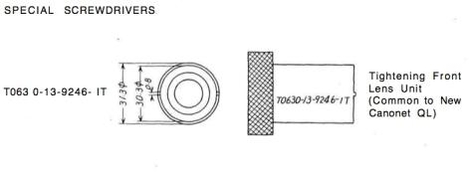The approach shown in the video using plies is extremely tricky, as it takes only a small slip of the hand to snap the pliers closed
I agree, one slip and you could make a deep scratch on the lens element. But this is exactly how I've been doing it for a decade or two and have never scratched a lens. My tool has longer arms (Dollar Tree purchase), two springs that stabilize it and the ends were filed to assure proper seating in the retainer slots or holes. The cool thing is that the tool is adjustable and works on large front retainers as well as the much smaller rear element retainers.
You can always put multiple layers of duct tape on the front element before hand just in case. For more protection, cut a piece of thick plastic to the correct size and place it under the tape. Unlike the guy in the video though, I place the camera on a rubber mat that grips the camera and prevents it from moving or shifting around. You also have to make sure the tool is 100% straight when you apply pressure and twist it counter clockwise.
This method is probably not for everyone, but if you have very steady hands, a good eye and pay attention it works and is safe. When I worked as a machinist and auto tech we would often build a tool for something like this out of metal. Ours were adjustable to fit different size jobs, but needle nose pliers work fine for this sort of simple, light duty work. The pliers in the video above are the wrong type though. They're too short and the arms are built wrong, it could easily slip and close up on you. You want something that's made like this.




 ) is a machinist divider. There are adjustable but more stable than pliers. They are not the strongest for rotational force, but you can grab the two legs with pliers (slip joint better than needle nose) or an adjustable wrench to keep the legs from splaying, etc. They come in different sizes.
) is a machinist divider. There are adjustable but more stable than pliers. They are not the strongest for rotational force, but you can grab the two legs with pliers (slip joint better than needle nose) or an adjustable wrench to keep the legs from splaying, etc. They come in different sizes.